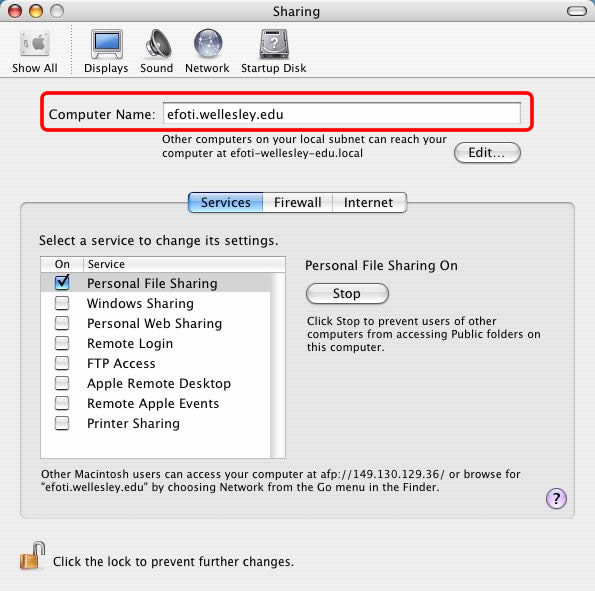

- #CHECK MY FIREWALL SETTINGS MAC HOW TO#
- #CHECK MY FIREWALL SETTINGS MAC SOFTWARE#
- #CHECK MY FIREWALL SETTINGS MAC PASSWORD#
- #CHECK MY FIREWALL SETTINGS MAC PC#
- #CHECK MY FIREWALL SETTINGS MAC MAC#
You can later turn off your MacOS’s firewall using the corresponding button. The green circle lights up, and your MacOS will allow incoming internet traffic for established connections, signed software, and enabled services. If the window does not say Firewall: On, tick the Turn On firewall button.
#CHECK MY FIREWALL SETTINGS MAC PASSWORD#
Tick the lock icon on the lower-left of the window, enter your administrator password and tick unlock. To run on the firewall on your MacOS, open System Preferences > Security & Privacy > Firewall. You can specify whether to allow or block incoming connections for each application.
#CHECK MY FIREWALL SETTINGS MAC MAC#
The built-in Mac firewall provides this, and it is intuitive and straightforward by design. App layer firewall is not based on the ports used. App Layer FirewallĪpp Layer Firewall is a firewall component that will allow or deny access for an application to set up communication over the network.
#CHECK MY FIREWALL SETTINGS MAC SOFTWARE#
In the Mac operating system’s case, there are two components of the software firewall. TechNinjaPro has discussed in detail the difference between a firewall and an antivirus. The significance of a firewall as a part of security cannot be underestimated.
#CHECK MY FIREWALL SETTINGS MAC HOW TO#
In this blog, TechNinjaPro will show you how to configure your firewall and when you have to use it. If you keep these services turned on or use third-party applications, that could make your Mac vulnerable to a network attack. The Mac operating system also includes a collection of shared network services to remotely access your content. Like firewalls on other operating systems enables you to block a specific type of incoming connections. The Windows firewall has been turning on by default ever since worms like Blaster infected all those vulnerable Windows systems, so gives? Mac systems include a firewall that you can turn on from Security & System Settings. Mac operating system X ships with a built-in firewall, but it is not enabled by default.
#CHECK MY FIREWALL SETTINGS MAC PC#
But if you use a laptop or PC and hop onto untrusted internet networks frequently, you should turn on the firewall. The chances are that your PC is behind the firewall that is part of your router, so having the Mac operating system’s firewall turned off makes it simpler to set up internet connections with other Mac devices. Enter the new name in the Save As field, and then select Clone.Do you want a firewall on your Mac PC? Well, yes and no. Select the check box for the object or profile that you want to clone and then select. You can create a new object or profile by cloning an existing object or profile and then renaming it. When rearranging rules, keep in mind that the device checks rules in order from the top of the list until it finds a match. To move a rule up or down in the list, use the Up or Down arrows in the Order column. To resolve this, you can rearrange the rules in the policy list. Because rule 1 applies to a subnet that includes the host address used in rule 2, the second rule will never be applied. For example, if the IP address of a host in rule 2 is part of a subnet specified in rule 1, the placement of rule 2 below rule 1 is problematic. If more than one rule in a policy matches the source or destination or service, the device applies the rule that is higher in the policy rule list first because that is the first match it finds. The position of a rule in a firewall policy rules list is important because the device applies rules in order starting with the one at the top of the list. You can rearrange the position of rules in the list to determine the order in which they are applied by the device, as described in the following section.

As you continue to add rules to a policy, each subsequent rule is positioned at the bottom of the list. After you add the first rule, the next rule you add is positioned below it automatically.To add another rule, select, and repeat the previous step. This option is only displayed when the Action field is set to "Deny". Session Termination: Choose this option to log session details when a session matching a MAC firewall policy is terminated.īoth: Choose this option to log session details after initiating and terminating a session.ĭropped Packets: Choose this option to log packets that the device drops because the firewall policy rule denies them. Session Initiation: Choose this option to log session details when a session is created after passing a MAC firewall policy lookup.

Off: Choose this to disable logging for packets and sessions that match the MAC firewall policy rule.


 0 kommentar(er)
0 kommentar(er)
